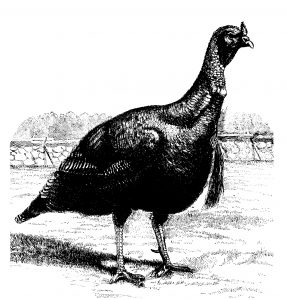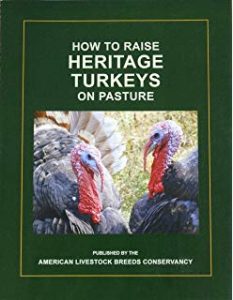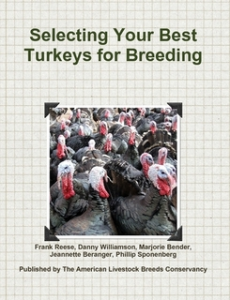
Breed Facts
Status:
Watch*
Use:
Meat
Egg Color:
Pale cream to medium brown with spotting
Egg Size:
Large
Market Weight:
14 – 23 lbs
Temperament:
Highly dependent on selection by breeder, Some select for aggressive, others docile
Notes:
* Jersey Buff turkeys are a distinct variety but not recognized by the American Poultry Association so they are included in ‘All Other Varieties’
JERSEY BUFF TURKEY
The Buff is a historic turkey variety from the mid-Atlantic region named for the beautiful color of its feathers. Though never widespread, it was accepted by the American Poultry Association in 1874 and used in the development of the Bourbon Red variety in the late 1800s. The Bourbon Red, selected more purposefully for performance and promoted more widely, gained prominence, causing Buff numbers to decline.
Even though the breed’s color was advantageous for processing because of its nearly white pinfeathers, the Buff was not extensively selected for other performance qualities and by the early 1900s, this variety had become rare. An additional obstacle to the Buff’s success was the difficulty of breeding birds to meet the Buff color standard, which called for even buff coloration throughout with light flight feathers. By 1915, the Buff was removed from the American Poultry Association’s Standard of Perfection and ultimately became extinct.
Interest in creating a buff-colored turkey was revived in the 1940s. The New Jersey Agricultural Experiment Station at Millville initiated a program to develop a small to medium-size market turkey. This is one of the few instances where a new variety was developed in a methodical manner: the Beltsville Small White and the commercial Large White being other examples. The new buff-colored birds, called “Jersey Buffs”, were developed through pedigree breeding and selection from crosses of Black, Bourbon Red and Broad Breasted Bronze varieties. It is interesting that the original Buff was used in developing the Bourbon Red and then, in turn, the Bourbon Red was used in developing the newer Jersey Buff variety. A single gene for red is the same in both varieties.
The Jersey Buff has rich reddish-buff-colored body feathers. Tail feathers are white with a light buff bar across them near the end. Primary and secondary wing feathers are white with buff shading. It’s difficult to have the Jersey Buff males and females match in color since the females tend to lighten with age, especially after a molt. For both toms and hens, the shanks and toes are bluish-white or flesh-colored, the beard is black and the eyes are hazel.
Young toms weigh about 21 pounds and mature hens about 12 pounds. Both present a clean carcass when dressed. The Jersey Buff has not been recently selected for production attributes, including weight gain, and many birds will be smaller than stated. Hens have also been known to be good egg producers. Their calm nature and ease to work with make them ideal for small-scale productions or hobby farms. Careful selection for good health, ability to mate naturally, and production attributes will help ensure the survival of these turkeys.
Did you know:
The Livestock Conservancy is America’s leading organization working to save over 150 heritage breeds from extinction. We rely on the support of our members, grants, and donations from the public to raise the $700,000 a year needed to maintain our conservation work with rare breeds of farm animals. Click here to learn how you can help.
You may be interested in…



